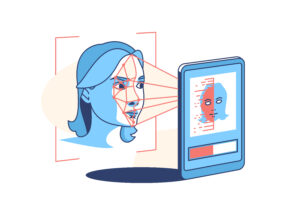At this point in time, where information can effortlessly flood your content management program, you may need to organize these pieces of data into an accessible and updatable system. With different technological developments emerging, probably one of the most basic technologies your system needs now is Optical Character Recognition, or just simply known as OCR.
In 1914, Emanuel Goldberg invented a machine to read printed characters and convert them into a standard telegraph code. Later, he developed the machine, patented as a Statistical Machine, to search for microfilm archives using the OCR system.
Then soon after, Rey Kurzweil developed omni-OCR to recognize any printed text regardless of font. This development paved the way for using OCR to help visually-impaired people. After the OCR identifies the characters of a text, a computer can read the text for them aloud.
Years later, companies and institutions are now using OCR for their content management systems and data capture – making work and business processes more efficient and cost-effective.
Today, you will learn how OCR can save costs and where to apply the OCR system. But first, let’s discuss the function of OCR in this day and age.
OCR System in the Modern World
OCR main use is to convert images of text or scanned pages with text to machine-encoded text that is easy to access, edit, store, and manage. The function of OCR appears to quite simple. However, it involves intricate processes to achieve accurate results.
OCR is a significant factor in data entry. With this technology, data entry employees can minimize the need of typing the information manually. With best practices for capture and the pre-processing, the results would not be 100% perfect but correcting errors is typically much less cumbersome compared to all-manual data entry.
The capture and pre-processing procedures are vital steps in the accuracy of the OCR results. One of the most common challenges In capture are, the document’s position which must be aligned properly horizontally and vertically. Secondly, spots and lines on scanned pages can also affect document recognition, so it is best to remove them using a tool or software.
To maximize the function of OCR in intelligent document processing, you should learn about the best pre-processing techniques for accurate OCR results.
![]()
Cost-Effective Ways of OCR in Document Processing and Content Management
Although premium and high-accuracy OCR comes with a price, it can be more cost-effective in the long run, especially when dealing with a gigantic amount of information and time is gold.
Here are key ways the OCR system can save operation costs:
1.Minimize Time For Data Entry
Data entry into a system can be prone to errors and mistakes. Moreover, it can take too much time, especially when you enter redundant information on different platforms. With OCR, you can save time for data entry and make employees do many important tasks.
However, as mentioned earlier, converting scanned or images of text is not always 100% accurate, time for correcting errors, especially for context purposes, may be done by data entry professionals.
2.Less Physical Storage Space
With digitized documents, a business can save physical storage space, which can lessen the cost of renting spaces. OCR technologies are often included in enterprise content management systems that allow short- and long-term storage of information in a secured system.
3.More Secured
Paper documents, such as tax forms, personal information sheets, and financial reports, can get damaged, stolen, or destroyed. Digitizing printed files can save a business from losing valuable information.
Furthermore, with machine-encoded text processed by OCR technology, the business can use systems to streamline available data and assign tasks to personnel efficiently.
4.Save Time and Promote Productivity
Since machine-encoded text is searchable and editable, employees can easily search for information needed for their tasks. For instance, in insurance claim processing, the worker can access the user’s records instantly.
Moreover, without the need to input redundant data, OCR can promote productivity within the workplace as the workers can focus on more crucial tasks at hand.
5.Reduce Material and Maintenance Costs
Going paperless is probably one of the most environment-friendly ways a business can do. With digital documents available online, a business can cut off the cost of procuring papers and printing tools.
Aside from materials, a business can also reduce the cost of maintenance services, such as printer repair, shredder repair, and storage space cleaning.
Applications of OCR
Data and information will inevitably increase in time. That’s why it is essential to maximize technological advancement to avoid overloading an institution’s storage space with paper documents.
Different industries rely on OCR for their business operations. Since almost all entities process information, OCR can help them organize and make data more accessible.
To further understand the benefits of OCR in document processing and content management, here are some of the applications of OCR in many different ways:
Invoice Processing
OCR technology in invoice processing can automatically determine typical invoice elements, such as date, invoice number, vendor, amount, and line item data. Thanks to the OCR technologies’ data extraction feature, automating invoices using other management systems can be easy and efficient.
Insurance Claims
In insurance claim processing, data verification is a crucial process, especially the signature. OCR technology can quickly compare the insurance claim form from the database of information of the claimant.
Furthermore, insurance policies are also an important element required by the government. As OCR processes data to be in digital format, it can prevent delays and help in a quick policy reference for safety and security purposes.
Accounts Payable Automation
Often referred to synonymously with Invoice Processing, fFor accounts payable automation, the OCR allows all types of invoices to be directed into a repository, regardless of origin. Then, it can automatically classify documents and attachments and organize them by business logic. Moreover, it can extract data, instantly validate information against a database, and match necessary information with purchase orders.
Accounts payable automation can track invoices, ensuring the right files reach the designated people.
Drivers License and Other ID Documents Reading
Verifying customer identity is a standard protocol for business transactions. And as more and more businesses are digitizing their data, OCR can help in the verification process, especially for driver’s licenses.
OCR technology can identify a driver’s license’s picture, signature, address, and other vital information – making verification be done in a matter of seconds.
Tax Forms Processing
Tax statements require safe and accurate processing. OCR’s text detection can extract accurate data without a hassle unless the quality of the image or scanned page is unacceptable.
As tax forms may have long digits of numbers, processing them with OCR can be the best option.
Mailroom Automation
Classifying documents is integral in a business process. But sorting an inbox of emails is prone to error. OCR systems for mailrooms usually contain content-based and visual analysis to classify documents more accurately. It can also have data extraction and exportation features,
OCR in mailroom automation converts physical mail into digital forms for easy storage, sorting, routing, control, and security. Automating mail can improve service quality and response time while reducing possible data entry errors.
Bank Check Verification
Nowadays, banks have mobile applications that can allow check deposits digitally. These applications are built with OCR technology to verify the information written in the check. OCR has a block-reading feature, which divides parts of the image of the check. That way, it can easily recognize the type of data the check shows.
Automobile Production
Car manufacturers embed serial numbers in car parts during assembly to keep production smoothly. The OCR technology ensures that each part with a serial number is assembled in the right place to avoid installation errors.
The OCR system conducts text detection and verification in real-time to ensure the parts are labeled correctly.
Legal Documentation
Courts require an OCR system to digitize and organize piles of cases, policies, judgements, affidavits, wills, and other legal documents. Furthermore, easy access to these documents is essential in making legal decisions and policy making. These thousands of pages need a centralized system available for designated people in the legal sector.
Conclusion
The list we provided here is only a partial one. Optical character recognition is a widely-popular technology in content and document management systems. So a computer can read the data from a scanned page or image of a typed, written, or printed text, OCR converts these pieces of information into machine-encoded text.
Businesses maximize OCR systems to digitize their files and documents – which makes them more accessible and updatable. Furthermore, OCR technologies save some costs for a company since they can minimize the time for data entry, lessen physical storage space, secure information flawlessly, save time, promote productivity, and reduce the usage of materials and the need for maintenance services.
Furthermore, OCR can be applied to many cases, such as invoice processing, insurance claim, driver’s license reading, ap automation, tax forms processing, mailroom automation, bank check verification, and automobile production. These applications are just a few of the vast potentials OCR can offer.
Indeed, OCR has been one of the most-used technologies for data management. Integrating OCR with efficient content management and document processing system, the company work would undoubtedly be more productive without worrying about the accuracy of the available data or information.





